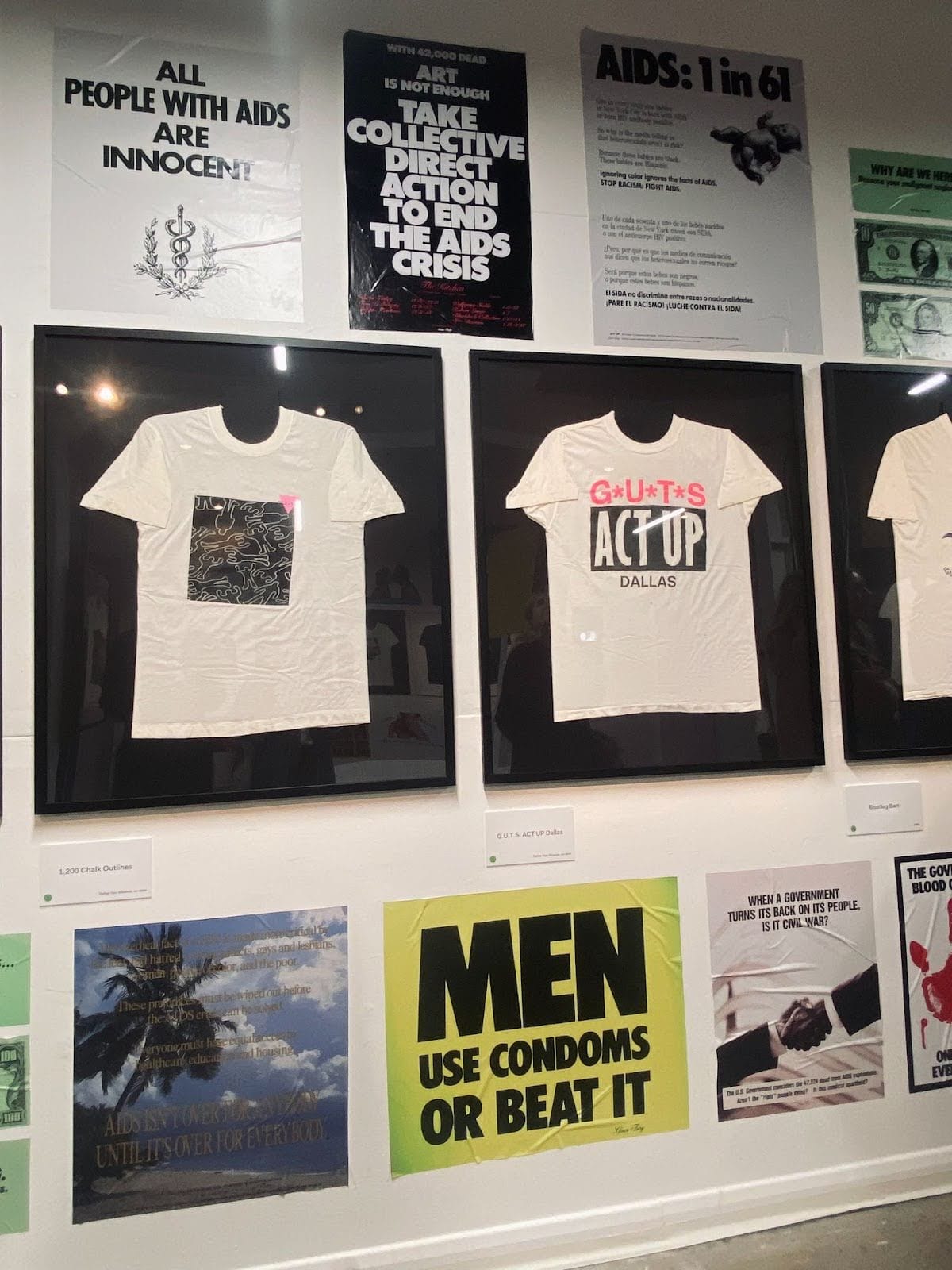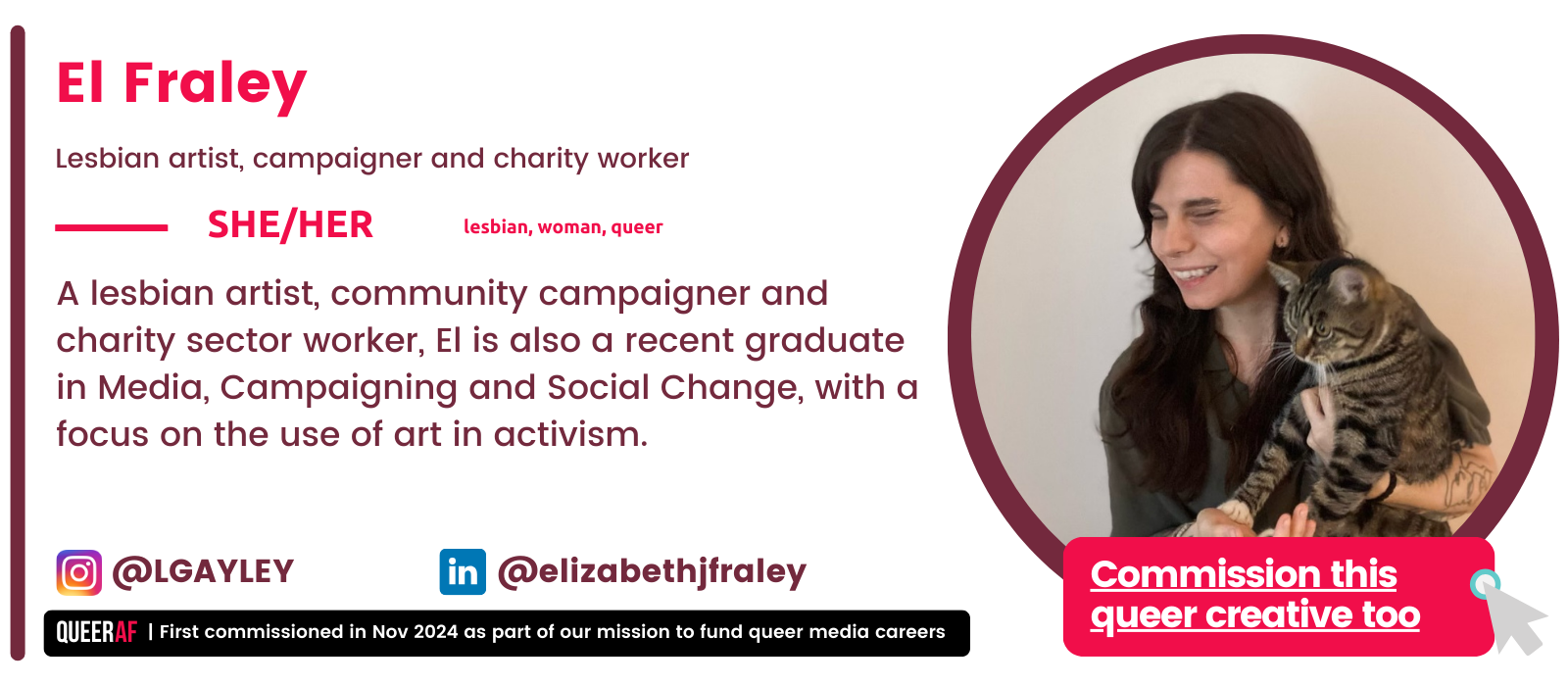
On a cold November evening in London, some friends and I found ourselves at a small Brick Lane exhibition titled Say It With Your Chest: T-Shirts of Queer Protest and Rebellion. Curated by actor Russell Tovey, the exhibition showcases T-shirts used in HIV/AIDS activism.
Walking through and looking at these worn T-shirts, my mind was drawn to the power of the bodies that once inhabited them. They were representative of the stories of those who fought for their lives — and for all of the lives that were tragically cut short by the HIV/AIDS epidemic.
Each T-shirt told a story of someone’s fight — a fight for life in the face of a society that labelled AIDS a “gay disease,” creating scapegoats instead of solutions. These activists wore their outrage and refused to be silenced.
LGBTQ+ activists took to the streets, challenging the mainstream portrayal of HIV/AIDS and showing the realities of the epidemic. Their protests countered mainstream discriminatory representations of the virus, making it impossible to separate the HIV/AIDS epidemic from LGBTQ+ activism.
Through protest T-shirts, activists could assert their own stories and reclaim stigmatised identities. This was especially powerful in the face of society’s fear and shaming of the HIV-positive body. By making the body itself a site of protest, the act of wearing these shirts became a defiant statement: “I am here, I matter, and I will be seen.”

Eric Gonzaba, founder of Wearing Gay History, a digital archive of LGBTQ+ T-shirts, told me how groups like ACT UP in the United States and Treatment Action Campaign (TAC) in South Africa used shirts to demand visibility and serve as wearable protests. This visual imagery was a way to channel anger and transform public discourse about the epidemic.
For ACT UP, the T-shirts expressed the fury of a community left to fend for itself. Messages like “SILENCE = DEATH” made it clear that inaction was costing lives. Turning anger into action, these T-shirts confronted the complacent and challenged the powerful, redirecting shame and fear toward those who had failed to protect communities.
In South Africa, TAC’s “HIV POSITIVE” shirts offered a bold challenge to stigma and government inaction. Drawing on South Africa’s liberation movement, TAC activists wore these shirts as a tool for challenging representations of those impacted by the virus. It was a message of defiance and solidarity, demanding access to treatment and respect for the lives of those affected.As these T-shirts move through everyday spaces, they bring HIV/AIDS activism into both the personal and public realms. As symbols of resilience, they transform pain into purpose and anger into action. Each one reflects the personal battles of those who wore them, making their stories impossible to ignore.
By turning the body into a site of protest, these shirts carry the voices of HIV/AIDS activists, ensuring their calls for justice remain visible and allow our history to be a tool for liberation today.

Leading The Charge
You don’t have to take our word for how important our membership drive is:
“These folks are leading the charge on doing queer journalism different, and doing it right. Some of my favourite work *as* a trans journalist has been done here”
That’s QueerAF contributor William Elisabeth Cuthbert (on Bluesky). William has used their QueerAF portfolio to go on to get multiple commissions in national papers, including the Metro.
That’s the power of our work. We’re training queer creatives, who go on to change newsrooms, and change the country.
Support that mission - and grab your last chance to lock in membership drive discounts!










